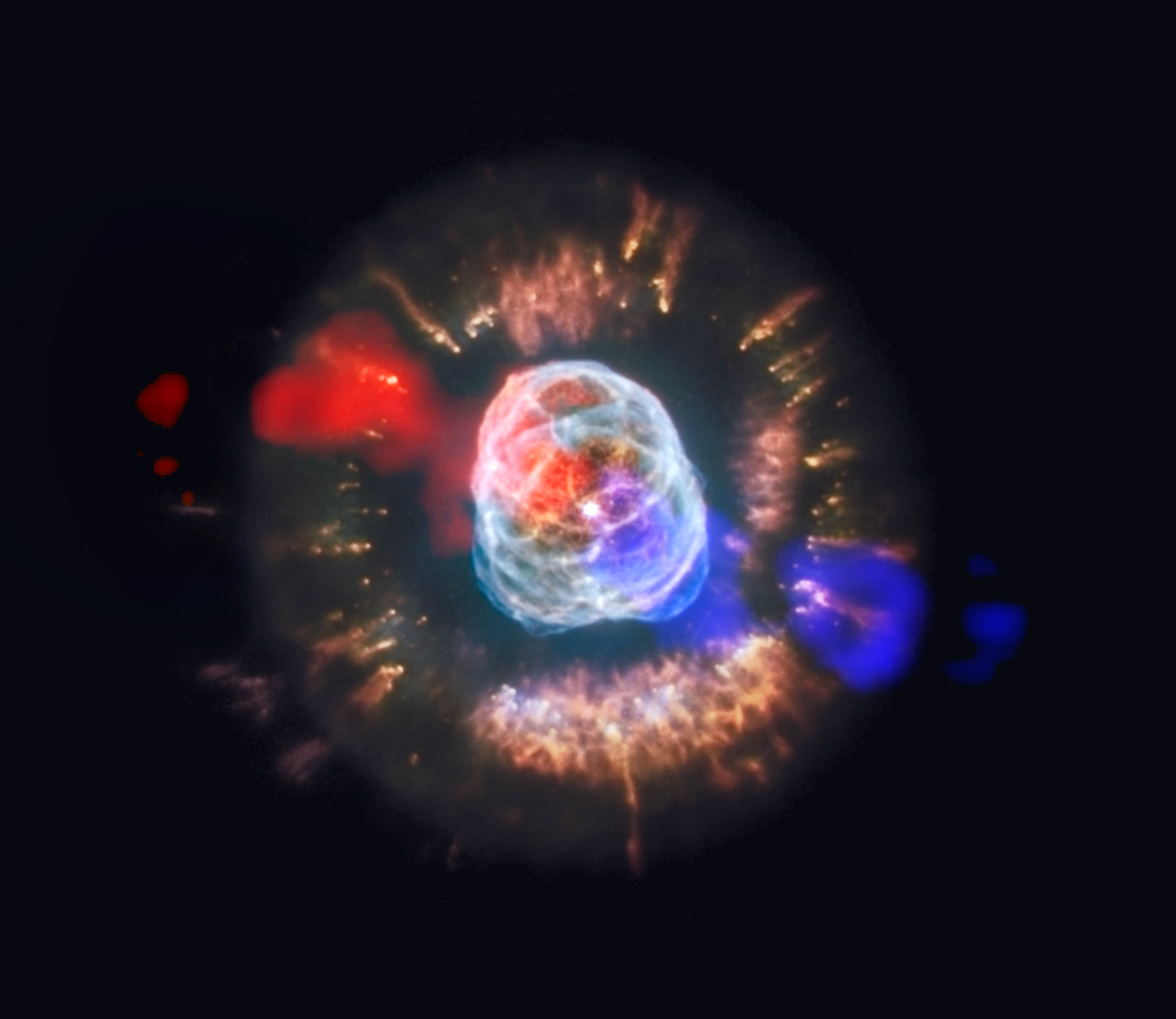Observed for the first time a jet of gas as it emerges from the central star of a planetary nebula
Thanks to MEGARA instrument of the Gran Telescopio Canarias, researchers from the Institute of Astrophysics of Andalusia (IAA-CSIC) have observed and analyzed the jet of NGC 2392, which points to the existence of a companion star
All stars with a mass less than eight times that of the Sun will end their lives as planetary nebulae, formed by a central star -the "bare" core of the star after the expulsion of its outer layers- surrounded by a fluorescent envelope. These nebulae can have spherical, bipolar or highly complex shapes and, although it is still unknown why one shape or another develops, the indications point to the participation of bipolar jets of material launched by the action of a companion star. A group of astronomers led by the IAA-CSIC has traced the bipolar jet of the planetary nebula NGC 2392 to its central star, thus demonstrating that the jet launch process is still active.
After exhausting their fuel, low and intermediate mass stars shed their outer layers, forming an envelope of ionized gas around a white dwarf star: a planetary nebula. "Until just a couple of decades ago it was believed that the morphologies of planetary nebulae were due to the interaction of stellar winds launched in two different evolutionary phases, a model that did not explain the asymmetric or multipolar forms of some of them -points out Martín A. Guerrero, researcher at the Institute of Astrophysics of Andalusia (IAA-CSIC) who is leading the study-. Now we know that very fast and collimated jets of material, which are formed at the end of the star's life, could interact with the envelope expelled in previous stages and draw different morphologies”.

The origin of this paradigm shift dates back to the mid-1980s, when what was called a high-speed “bipolar flow” was discovered precisely in NGC 2392, the nebula object of this study, and which represented the first indication of a jet of material in a planetary nebula. And, although the speed of the material could even be measured, the brightness of the nebula (especially the inner shell) made it impossible to obtain a direct image of the jet.
Up to now. Today we have a technique known as integral field spectroscopy, capable of resolving previously unattainable details and used by state-of-the-art instruments such as MEGARA, which operates at the Gran Telescopio Canarias (GTC). "The extraordinary tomographic capacity of MEGARA has allowed us to separate the terribly weak emission of the jet from the bright nebular emission," says Sara Cazzoli, a researcher at the Institute of Astrophysics of Andalusia (IAA-CSIC) who is participating in the work.
Thus, almost four decades after the discovery of the jet in NGC 2392, researchers have discovered that it consists of two large globules (and some fainter nodules) emerging from the central star and extending beyond the outer shell of the nebula. The material in the jet shows a velocity of about 206 kilometers per second, an age of about 2600 years and a linear size twice that of the nebula itself.
According to the results, the jet passes through the inner bright shell and, since the jet and the shell show similar speeds, everything indicates that it is the jet that accelerates the gas of the shell and shapes it, and not the weak stellar wind of the star. Furthermore, the MEGARA 3D tomography of the jet reveals that it is currently being collimated, unlike the fossil jets, already inactive, detected in other evolved planetary nebulae.
“Finally, this work supports a result that we obtained in 2019 and that analyzed the high-energy X-rays emanating from the central star. These provide indirect evidence for the existence of an invisible companion revolving around the central star. In this scenario, the jet would emerge from the companion star, quite possibly another white dwarf, and the X-ray emission of an accretion disk around the latter”, concludes Martín A. Guerrero (IAA-CSIC).
M.A. Guerrero, S. Cazzoli et al. "Tomography of the Jet in NGC 2392". The Astrophysical Journal.
Instituto de Astrofísica de Andalucía (IAA-CSIC)
Unidad de Divulgación y Comunicación
Silbia López de Lacalle - sll[arroba]iaa.es - 958230676
https://www.iaa.csic.es
https://divulgacion.iaa.csic.es

